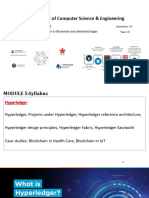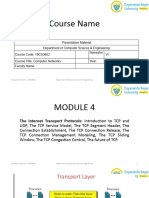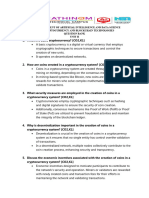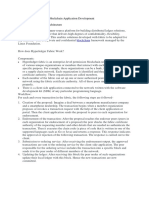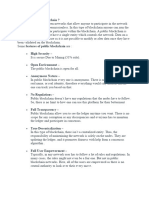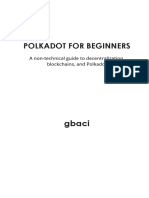0% found this document useful (0 votes)
29 views64 pagesMod 1
Blockchain is a decentralized ledger of transactions across a peer-to-peer network. It ensures security, anonymity and performs transactions efficiently. Traditional banking systems had issues like account hacking, frauds and high transaction costs. Blockchain provides a solution to these issues using features like cryptography, decentralized networks, consensus algorithms and distributed ledgers. In blockchain, transactions are broadcast across the network, validated by miners through solving mathematical puzzles, and added to new blocks which are further added to the blockchain in a decentralized manner ensuring security and transparency.
Uploaded by
geles73631Copyright
© © All Rights Reserved
We take content rights seriously. If you suspect this is your content, claim it here.
Available Formats
Download as PDF, TXT or read online on Scribd
0% found this document useful (0 votes)
29 views64 pagesMod 1
Blockchain is a decentralized ledger of transactions across a peer-to-peer network. It ensures security, anonymity and performs transactions efficiently. Traditional banking systems had issues like account hacking, frauds and high transaction costs. Blockchain provides a solution to these issues using features like cryptography, decentralized networks, consensus algorithms and distributed ledgers. In blockchain, transactions are broadcast across the network, validated by miners through solving mathematical puzzles, and added to new blocks which are further added to the blockchain in a decentralized manner ensuring security and transparency.
Uploaded by
geles73631Copyright
© © All Rights Reserved
We take content rights seriously. If you suspect this is your content, claim it here.
Available Formats
Download as PDF, TXT or read online on Scribd
/ 64



























































